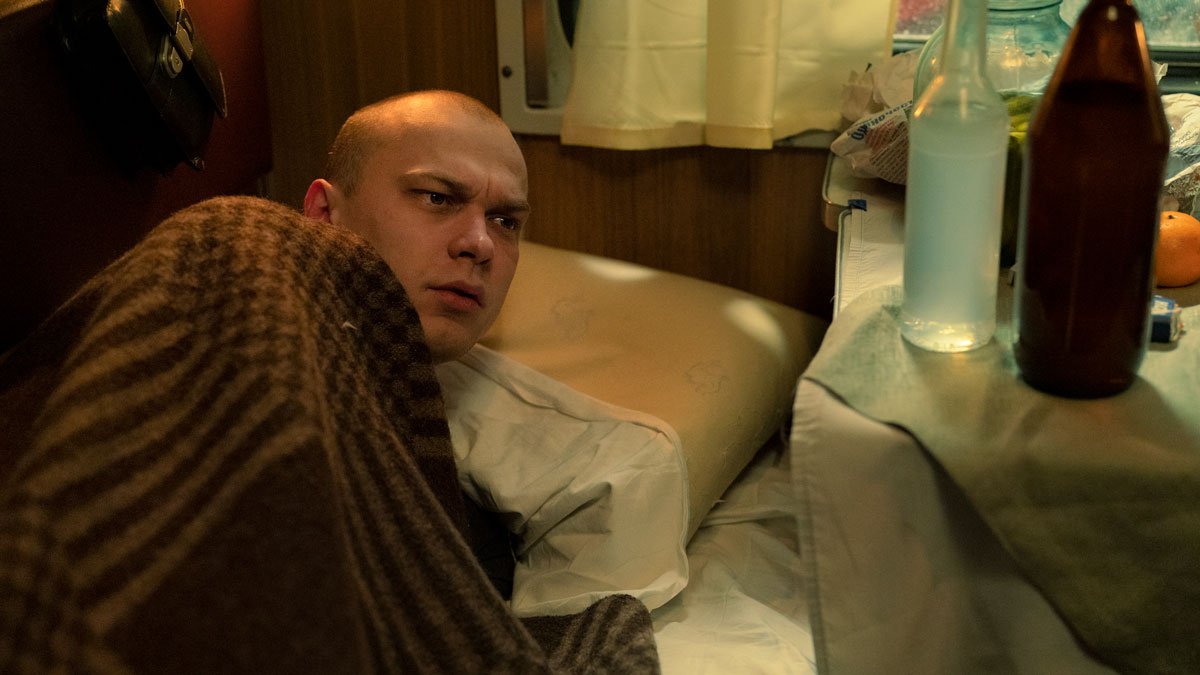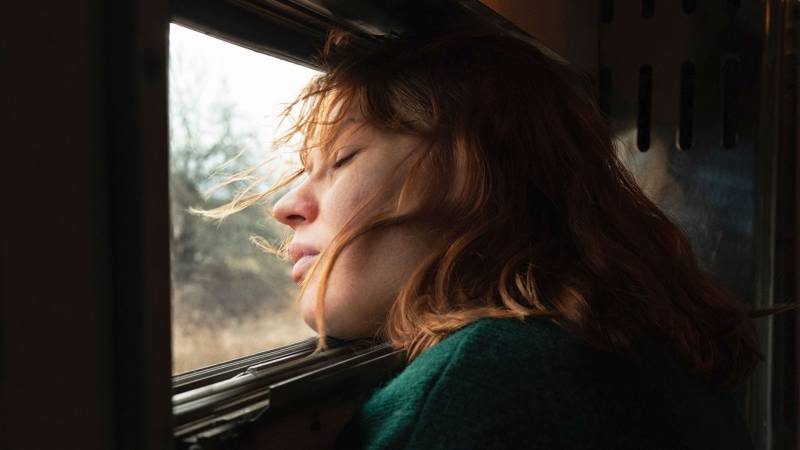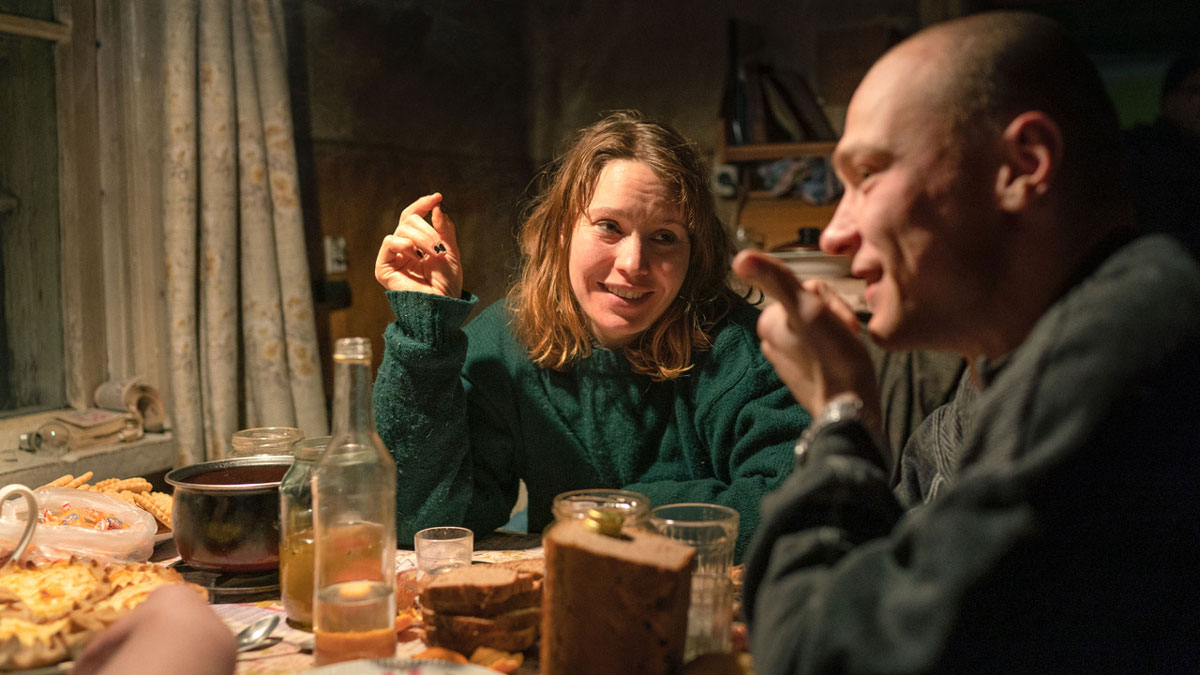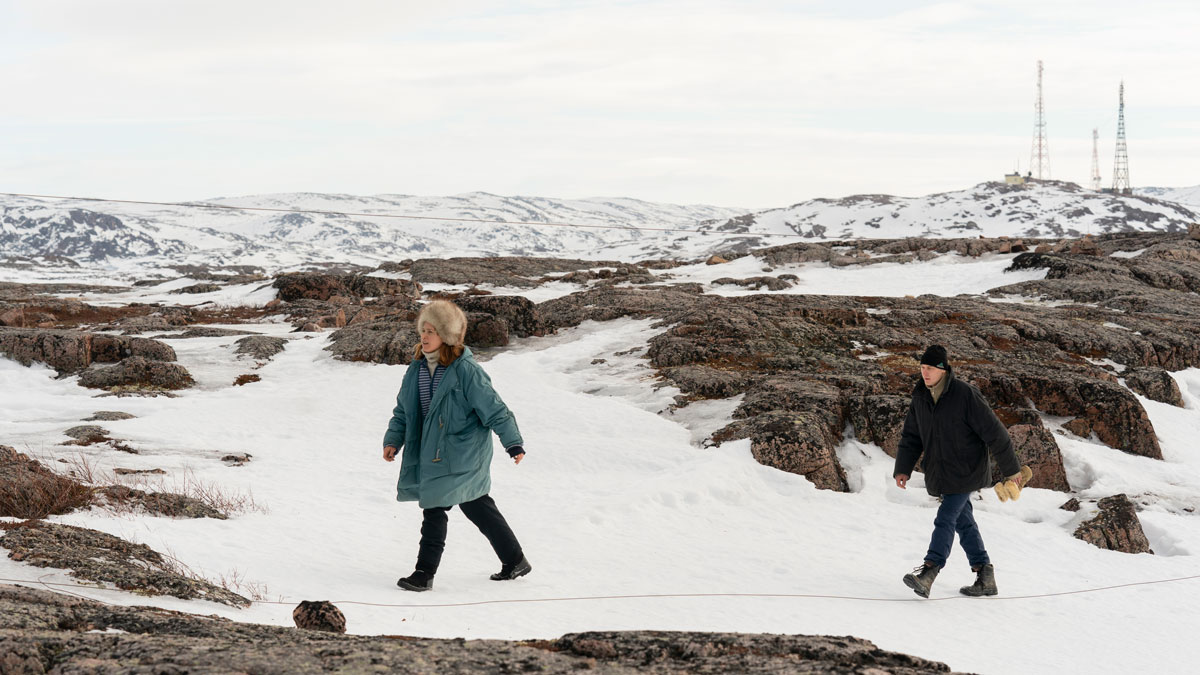Compartment No. 6 begins at an oasis, a Moscow apartment where party guests banter about Western authors while Roxy Music’s “Love Is The Drug” plays. It ends in the freezing cold at the edge of nowhere, far from city life. But don’t despair, for that’s when the sun appears for the first time in the movie, clinching an optimistic, if not altogether happy, ending.
The apartment, we come to learn, was a romantic, and romanticized, refuge for Laura (Seidi Haarla), the Finnish archeology student staying with the party’s hostess, her lover. Laura doesn’t expect that relationship to end when she takes a train due north to Murmansk to see the recently discovered rock drawings known as the Kanzero Petroglyphs. But out of sight, out of mind, and Laura’s lover doesn’t waste a second before moving on.
So will Laura, eventually, but only after weathering an uncomfortable, lonely, three-day train trip. Finnish director Juho Kuosmanen (The Happiest Day in the Life of Olli Maki) presents a bleak, mid-winter Russia of undistinguished, indistinguishable vistas and nondescript train stations. The few people Laura encounters seem as brutalized as the washed-out landscape, geared to surviving rather than living.

She does have company, in a manner of speaking, in the other occupant of her second-class compartment. Ljoha (Yurly Borisov) is a rude, hard-drinking fellow without much education and only slightly more curiosity. He’s not stupid and possesses a vague ambition, yet his absolute indifference to the petroglyphs’ existence suggests a broad disinterest in history and art.
Adapted from Finnish writer Rosa Liksom’s 2011 novel and a prizewinner at Cannes last year, Compartment No. 6 could be construed as a contemplation on what lasts and what is fleeting, what’s important and what we think is important. But that’s a bit too pat, for the petroglyphs ultimately prove less consequential than the portraits Laura and Ljoha draw of each other. Or rather “sketch,” for they (and we) never learn very much about the other’s background, family, etc.





